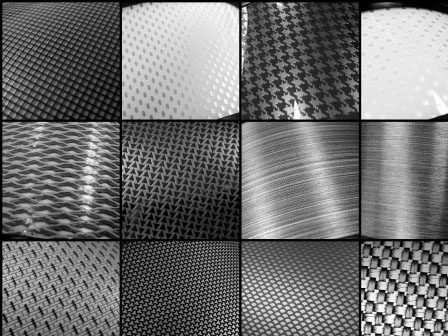Some Metal Finishes You Should Know
What is metal finishing? many people think of metal finishing, they may only think of it as aesthetic finishes like paint and powder coat in order to make parts look good and to change the color. Metal finishing is used to treat the exterior of a metal product by applying a thin complementary layer to its surface. There are different types of metal finishing processes for different purposes. In this article, we will review the some knowledge on types of metal finishing.

1. Anodizing
There are Type i, Type II and Type III of anodizing. Anodizing is an electrolytic passivation process used to increase the thickness of the natural oxide layer on the surface of aluminum parts. The aluminum parts are the anode (thus the term “anodizing”) and current is passed between them and a cathode, usually flat aluminum bars, through the above mentioned electrolyte (sulfuric acid is most commonly used). The main functions of anodizing are Increase corrosion resistance, wear resistance, adhesion for paint and primersand more.
2. Metal Plating
Metal plating is a technique where chemical bath is used to coat or alter the surface of a substrate with a thin layer of metal, such as PTFE or nickel. The electroplating technique produces an electric current to spread the substrate, while electro-less plating occupies an autocatalytic practice where the substrate acts as a catalyst in the reaction. It provides a number of advantages such as enhance a product’s durability, corrosion resistance, surface friction, and exterior appearance. Apart than that, it also a useful option in coating the other metals.
3. Electroless plating
This process involves applying a uniform layer(s) of a metal to a substrate without the need for an electrical charge. Nickel is often used for this process as it gives a uniform thickness on the substrate even on awkward shaped objects. Electroless plating is a process that important in increasing the resistance in corrosion, oxidation and wear resistance.
4. Passivation
It is a process used to improve the surface condition of stainless steel by dissolving the iron that is embedded in the surface by forming, machining, or other manufacturing steps. This is achieved by placing the stainless steel into an acid solution to dissolve the residual iron and to form a thin oxide layer on the surface. It increased the corrosion resistance and maintains the dimensional integrity of close tolerance parts.
5. Powder Coat
Powder coating involves melting dry plastic powder onto the metal to produce a textured, matte, or glossy coating. It applied the powder to the metal electrostatically and is then cured under heat to allow it to flow and form a hard “skin”.
6. Hot Blackening
It is a process involved the use of machines to spread a thin layer of black oxide onto a product’s surface in order to create a matte black finish with high abrasion resistance. Hot Blackening is a high-temperature process i in which the product is inserted into a series of tanks containing caustics, cleaners and coolants.
Hope that the brief introduction on the metal finishes type could provide a better understanding toward finishes. Kindly contact Worthy Hardware if you are seeking for some surface finishing services.

